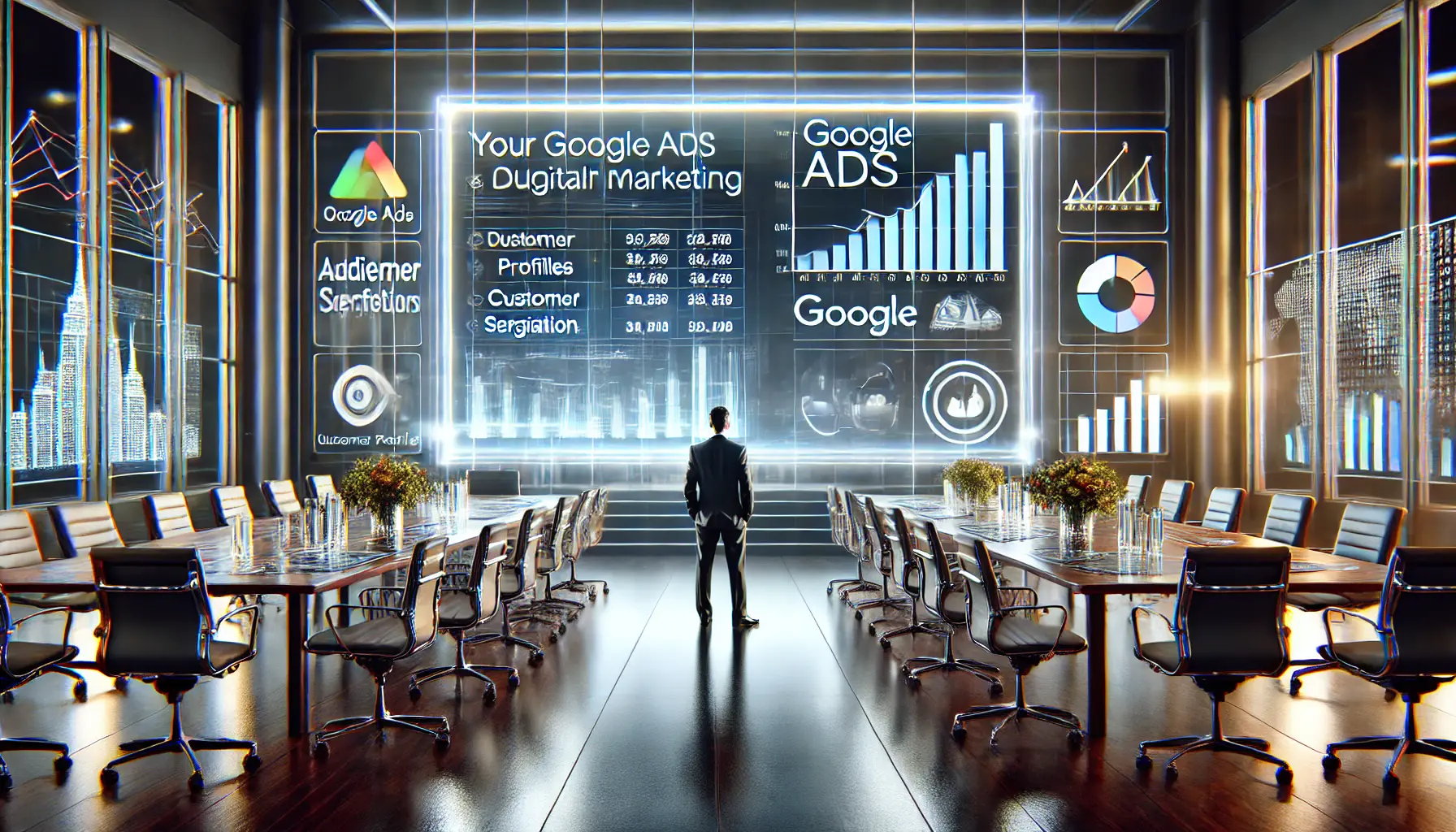In the rapidly evolving landscape of digital marketing, the advent of AI technologies like Google’s Bard has opened new avenues for creating personalized marketing campaigns.
These advanced tools are not just changing the way marketers approach campaign strategies but are also setting new benchmarks for customer engagement and content personalization.
Google’s Bard, with its sophisticated language models and deep learning capabilities, stands at the forefront of this revolution, offering marketers unprecedented opportunities to craft campaigns that speak directly to the individual preferences and behaviors of their audience.
Personalization in marketing is no longer a luxury but a necessity in the digital age, where consumers are bombarded with countless ads every day.
The ability to cut through the noise and reach consumers with messages that resonate with their specific needs and interests can significantly enhance the effectiveness of marketing campaigns.
This is where Google’s Bard comes into play, leveraging its AI-driven insights to enable marketers to create highly targeted and personalized marketing strategies that are more likely to convert prospects into customers.
- Understanding Google’s Bard and Its Capabilities
- Strategies for Implementing Personalized Marketing with Bard
- Optimizing Customer Journey with Personalized Content
- Measuring the Impact of Personalized Marketing
- Challenges and Solutions in Personalized Marketing
- Future Trends in Personalized Marketing
- Integrating Personalized Marketing into Your Overall Strategy
- Conclusion: Harnessing the Power of Personalized Marketing with Google’s Bard
- FAQs on Personalized Marketing with Google’s Bard
Understanding Google’s Bard and Its Capabilities
What is Google’s Bard?
Google’s Bard is an AI-powered conversational tool designed to understand and generate human-like text based on the input it receives.
It’s built on Google’s extensive data and machine learning models, enabling it to provide responses that are not only relevant but also personalized.
Bard’s primary strength lies in its ability to process vast amounts of information and present it in a way that is accessible and engaging for users.
This makes it an invaluable asset for marketers looking to develop content that is both informative and tailored to the interests of their target audience.
One of the key features of Google’s Bard is its natural language processing (NLP) capabilities.
This allows Bard to understand the nuances of human language, making it possible for marketers to create more nuanced and sophisticated marketing messages.
Whether it’s crafting compelling email marketing campaigns, generating creative social media posts, or developing targeted ads, Bard’s NLP technology ensures that the content is not only relevant but also resonates on a personal level with the audience.
Personalization at Scale
The challenge of personalizing marketing content at scale is one that many marketers face.
With Google’s Bard, this challenge becomes significantly more manageable.
Bard’s AI algorithms can analyze customer data, such as browsing history, purchase behavior, and engagement patterns, to identify individual preferences and interests.
This data can then be used to automate the creation of personalized content for different segments of the audience, ensuring that each piece of marketing communication is tailored to the recipient’s specific interests.
Moreover, Bard’s ability to integrate with other Google services, such as Analytics and Ads, provides marketers with a comprehensive view of their campaigns’ performance.
This integration allows for real-time adjustments to be made based on how different segments of the audience are responding, ensuring that the personalization strategy is always optimized for the best possible results.
The advent of AI tools like Google’s Bard is revolutionizing personalized marketing by enabling marketers to create highly targeted and engaging content at scale.
Strategies for Implementing Personalized Marketing with Bard
Implementing personalized marketing strategies with Google’s Bard involves a blend of creativity, data analysis, and technological integration.
By leveraging Bard’s capabilities, marketers can create campaigns that not only capture the attention of their audience but also drive meaningful engagement.
Here are key strategies for harnessing the power of Bard in personalized marketing:
Segmentation and Targeting: The first step in personalizing marketing efforts is to segment the audience based on various criteria such as demographics, behavior, and preferences.
Google’s Bard can process customer data to help marketers refine their segmentation strategies, ensuring that each campaign targets the right audience segment with the right message.
- Data-Driven Insights: Utilize Bard to analyze customer data and uncover insights that can inform personalized marketing strategies. This includes understanding customer preferences, predicting future behaviors, and identifying trends that can shape campaign direction.
- Content Customization: With Bard’s natural language generation capabilities, create customized content that speaks directly to the needs and interests of different audience segments. This can range from personalized email messages to tailored social media posts and targeted ad copy.
Dynamic Content Creation: Bard’s AI can dynamically generate content in real-time, allowing for personalized experiences that adapt based on user interactions.
This dynamic approach ensures that the content remains relevant and engaging for each user, enhancing the overall effectiveness of the marketing campaign.
- Interactive Experiences: Leverage Bard to create interactive marketing experiences, such as quizzes, polls, and chatbots, that are personalized for each user. These interactive elements can significantly increase engagement and provide valuable data that can further refine personalization efforts.
- Feedback Loop: Establish a feedback loop where Bard analyzes the performance of personalized content and provides recommendations for optimization. This continuous improvement cycle ensures that marketing strategies remain effective and responsive to audience needs.
Implementing these strategies requires a deep understanding of both the technology and the audience.
Marketers must be willing to experiment and adapt their approaches based on the insights generated by Bard.
The goal is to create a personalized marketing ecosystem that delivers relevant and engaging content to each segment of the audience, driving higher conversion rates and building stronger customer relationships.
Incorporating Bard into your marketing strategy offers a unique opportunity to engage with your audience on a more personal level, making your campaigns more effective and memorable.
Optimizing Customer Journey with Personalized Content
The customer journey encompasses every interaction a customer has with a brand, from initial awareness to post-purchase engagement.
Personalizing this journey with content tailored to each stage can significantly enhance the customer experience, leading to higher satisfaction and loyalty.
Google’s Bard plays a crucial role in optimizing this journey by providing the tools necessary to create content that resonates with the audience at every touchpoint.
Mapping the Customer Journey
Understanding the customer journey is the first step towards personalization.
This involves identifying the key stages a customer goes through when interacting with your brand.
With Bard’s analytical capabilities, marketers can gain insights into customer behaviors and preferences at each stage, enabling them to map out the journey with greater accuracy.
- Awareness: Content that introduces the brand and its values.
- Consideration: Detailed information on products/services, showcasing benefits and differentiators.
- Decision: Persuasive content such as testimonials and case studies to encourage purchase.
- Loyalty: Post-purchase support and engagement content to build a lasting relationship.
Creating Stage-Specific Content
Once the customer journey is mapped, the next step is to create content that addresses the needs and interests of the audience at each stage.
Bard’s natural language processing and generation capabilities enable marketers to craft messages that are not only relevant but also highly personalized.
- For the awareness stage, Bard can help generate informative blog posts and social media content that captures the audience’s attention.
- In the consideration stage, Bard can assist in creating detailed product descriptions and comparison guides that help customers make informed decisions.
- For the decision stage, Bard can produce compelling case studies and testimonials that highlight the value of the brand’s offerings.
- At the loyalty stage, Bard can support the creation of personalized email newsletters and exclusive offers to keep customers engaged.
Leveraging Real-Time Data for Dynamic Personalization
One of Bard’s most powerful features is its ability to leverage real-time data to dynamically personalize content.
This means that the content can adapt based on the latest interactions a customer has with the brand, ensuring that it remains relevant and engaging.
Whether it’s updating product recommendations based on browsing behavior or sending personalized email reminders for items left in the cart, Bard enables marketers to optimize the customer journey with content that speaks directly to the individual’s current needs and preferences.
Personalizing the customer journey requires a deep understanding of both the audience and the technology available. By leveraging Google’s Bard, marketers can create a more engaging and responsive customer experience that drives satisfaction and loyalty.
Measuring the Impact of Personalized Marketing
Assessing the effectiveness of personalized marketing campaigns is crucial for understanding their impact on customer engagement and overall business performance.
Google’s Bard, with its advanced analytics capabilities, provides marketers with the tools needed to measure and analyze the success of their personalized marketing efforts.
This data-driven approach enables marketers to make informed decisions and continuously refine their strategies for better results.
Key Metrics for Personalized Marketing
To gauge the success of personalized marketing campaigns, it’s important to focus on specific metrics that reflect customer engagement and conversion.
These metrics can include:
- Click-through rates (CTR): Measures the effectiveness of personalized calls-to-action and ad copy.
- Conversion rates: Indicates how well personalized content leads to desired actions, such as purchases or sign-ups.
- Customer lifetime value (CLV): Assesses the long-term value of personalizing marketing to individual customers.
- Email open rates: Tracks the success of personalized email campaigns in capturing the audience’s attention.
- Retention rates: Evaluates how personalized engagement strategies affect customer loyalty and repeat business.
By analyzing these metrics, marketers can gain insights into which aspects of their personalized marketing campaigns are working well and which areas need improvement.
This ongoing analysis is essential for optimizing campaign performance and achieving better outcomes over time.
Utilizing Bard for Analytics and Insights
Google’s Bard can be instrumental in analyzing the performance of personalized marketing campaigns.
Its ability to process large volumes of data and generate insights in real-time allows marketers to quickly assess the impact of their strategies.
Bard can help identify patterns and trends in customer behavior, providing valuable feedback that can be used to enhance personalization efforts.
Furthermore, Bard’s integration with Google Analytics and other marketing tools enables a seamless flow of data across platforms.
This integration allows marketers to combine Bard’s AI-driven insights with traditional analytics data, offering a comprehensive view of campaign performance.
Marketers can use this information to refine their targeting strategies, personalize content more effectively, and ultimately, drive higher engagement and conversions.
Effective measurement and analysis are key to the success of personalized marketing campaigns. With Google’s Bard, marketers have access to powerful analytics capabilities that can help them understand the impact of their efforts and continuously improve their strategies for better results.
Challenges and Solutions in Personalized Marketing
While personalized marketing offers numerous benefits, it also presents several challenges that marketers must navigate.
These challenges range from data privacy concerns to the complexity of managing personalized content at scale.
However, with strategic planning and the use of advanced tools like Google’s Bard, marketers can overcome these obstacles and successfully implement personalized marketing campaigns.
Addressing Data Privacy and Security
One of the primary concerns in personalized marketing is ensuring the privacy and security of customer data.
Consumers are increasingly aware of their data rights and demand transparency and control over how their information is used.
To address these concerns, marketers must adhere to data protection regulations such as GDPR and CCPA, ensuring that customer data is collected, processed, and stored securely.
Furthermore, using Bard, marketers can anonymize and aggregate data for personalization purposes, minimizing the risk of privacy breaches while still delivering tailored content.
Overcoming Content Complexity
Creating and managing personalized content for diverse audience segments can be complex and resource-intensive.
Marketers must produce a vast array of content variations to cater to different preferences and behaviors.
Bard can simplify this process by automating content creation and adaptation.
By inputting basic parameters and guidelines, marketers can use Bard to generate multiple versions of content, from email marketing messages to social media posts, significantly reducing the workload and ensuring consistency across all personalized materials.
Integrating Personalized Marketing Across Channels
Ensuring a seamless personalized experience across all marketing channels is another challenge.
Consumers interact with brands through various touchpoints, from social media and websites to email and in-store visits.
Integrating personalized marketing efforts across these channels requires a coordinated approach and robust data integration.
Bard’s ability to analyze data from multiple sources and generate cohesive content strategies can help marketers create a unified and personalized customer journey across all channels.
Despite the challenges, the potential rewards of personalized marketing are significant. By leveraging tools like Google’s Bard and adopting a customer-centric approach, marketers can create highly effective personalized campaigns that resonate with their audience and drive engagement and loyalty.
Future Trends in Personalized Marketing
The landscape of personalized marketing is constantly evolving, driven by technological advancements and changing consumer expectations.
As we look to the future, several key trends are poised to shape the direction of personalized marketing strategies.
Embracing these trends will be crucial for marketers aiming to stay ahead of the curve and deliver more impactful, customer-centric campaigns.
AI and Machine Learning Enhancements
Artificial intelligence (AI) and machine learning (ML) are at the heart of personalized marketing, enabling the analysis of large datasets to predict consumer behavior and automate content creation.
Future advancements in AI and ML technologies, including more sophisticated natural language processing and predictive analytics capabilities, will further enhance the personalization of marketing efforts.
Marketers can expect:
- Improved accuracy in customer behavior predictions.
- More dynamic and responsive personalized content.
- Enhanced ability to automate complex personalization tasks.
Increased Use of Voice and Conversational Interfaces
As voice-activated devices and conversational interfaces become more prevalent, personalized marketing will extend into these new channels.
Brands will leverage voice search data and conversational AI technologies, like Google’s Bard, to deliver personalized recommendations and assistance through voice assistants and chatbots.
This shift will necessitate:
- Adapting content for voice search optimization.
- Creating personalized voice-activated experiences.
- Integrating conversational data into overall personalization strategies.
Privacy-Centric Personalization
With growing concerns over data privacy, future personalized marketing efforts will need to balance personalization with privacy considerations.
This will involve the development of new strategies and technologies that deliver personalized experiences without compromising consumer data privacy.
Marketers will focus on:
- Implementing privacy-by-design principles in marketing campaigns.
- Utilizing anonymized and aggregated data for personalization.
- Enhancing transparency and control for consumers over their data.
Omnichannel Personalization
The future of personalized marketing lies in delivering seamless and consistent personalized experiences across all channels and touchpoints.
Omnichannel personalization will require sophisticated data integration and analysis capabilities, ensuring that every interaction a consumer has with a brand is informed by their preferences and behaviors.
Key areas of focus will include:
- Creating a unified view of the customer across channels.
- Automating real-time personalization across digital and physical touchpoints.
- Enhancing cross-channel customer journey mapping and analysis.
Staying abreast of these future trends and incorporating them into personalized marketing strategies will enable marketers to create more engaging, effective, and customer-centric campaigns. As technologies like Google’s Bard continue to evolve, the possibilities for personalized marketing will expand, offering new opportunities to connect with consumers in meaningful ways.
Integrating Personalized Marketing into Your Overall Strategy
Integrating personalized marketing into your overall strategy is not just about leveraging new technologies; it’s about adopting a customer-centric approach that permeates every aspect of your marketing efforts.
To effectively incorporate personalized marketing, businesses must align their objectives, data, content, and channels around the needs and preferences of their target audience.
Here’s how to make personalized marketing a core component of your strategy:
Aligning Business Objectives with Customer Needs
Start by ensuring that your business objectives are aligned with the needs and expectations of your customers.
Personalized marketing should aim to deliver value to both the business and the customer, whether through improved customer satisfaction, increased engagement, or higher conversion rates.
This alignment requires:
- Understanding your customers’ needs and preferences through data analysis.
- Setting clear objectives for your personalized marketing efforts that contribute to overall business goals.
- Measuring success through metrics that reflect both customer satisfaction and business outcomes.
Leveraging Data for Insight-Driven Personalization
Data is the foundation of personalized marketing.
Collecting, analyzing, and acting on customer data allows you to create highly targeted and relevant marketing messages.
To leverage data effectively, consider:
- Implementing robust data collection methods across all customer touchpoints.
- Using advanced analytics tools, like Google’s Bard, to uncover insights from your data.
- Ensuring data privacy and security to maintain customer trust.
Creating Content that Resonates
Content is the vehicle for your personalized marketing messages.
Creating content that resonates with your audience requires a deep understanding of their interests, pain points, and preferences.
Utilize Bard’s capabilities to:
- Generate personalized content ideas based on customer data insights.
- Create a variety of content formats tailored to different segments of your audience.
- Test and optimize content for maximum relevance and engagement.
Delivering a Unified Experience Across Channels
Personalized marketing should provide a consistent and seamless experience across all channels, from email and social media to your website and in-store interactions.
Achieving this unified experience involves:
- Integrating your marketing tools and platforms to share data and insights.
- Developing cross-channel personalization strategies that adapt to the customer’s journey.
- Continuously monitoring and optimizing channel performance to ensure a cohesive customer experience.
By integrating personalized marketing into your overall strategy and leveraging tools like Google’s Bard, you can create more meaningful connections with your customers, drive engagement, and achieve your business objectives.
The key is to remain agile, continuously adapt to customer feedback and data insights, and always prioritize the delivery of value to your customers.
Conclusion: Harnessing the Power of Personalized Marketing with Google’s Bard
The journey through the realms of personalized marketing with Google’s Bard reveals a landscape brimming with opportunities for businesses to connect with their audience on a more intimate level.
As we’ve explored, the integration of Bard into marketing strategies offers a pathway to not only understand but also engage with customers in ways that were previously unattainable.
The future of marketing lies in personalization, and Google’s Bard stands as a beacon for those willing to navigate this promising frontier.
Revolutionizing Customer Engagement
Personalized marketing, powered by AI tools like Google’s Bard, is revolutionizing the way brands interact with their customers.
By delivering content that resonates on a personal level, businesses can foster deeper connections, driving engagement and loyalty.
The key to unlocking this potential lies in the strategic use of data to inform every interaction, ensuring that each message is relevant, timely, and, most importantly, valued by the recipient.
Overcoming Challenges with Strategic Insights
While the path to personalized marketing excellence is fraught with challenges, from data privacy concerns to the complexities of content creation, the solutions lie within the strategic application of insights and technologies.
Google’s Bard, with its advanced analytics and natural language processing capabilities, offers a way to navigate these obstacles, providing marketers with the tools they need to create compelling, personalized experiences at scale.
- Adherence to data privacy regulations ensures trust and transparency.
- Automated content creation alleviates the burden of producing varied content for different audience segments.
- Real-time data analysis enables dynamic personalization, keeping content relevant and engaging.
Embracing the Future of Marketing
As we look to the future, the role of AI in marketing will only grow, with tools like Google’s Bard leading the charge.
Marketers must remain agile, ready to adopt new technologies and strategies that align with evolving consumer expectations.
Personalized marketing is not just a trend but a paradigm shift in how we think about engaging with our audience.
By leveraging the capabilities of Google’s Bard, businesses can ensure they are not just participants but leaders in this new era of marketing.
In conclusion, developing personalized marketing campaigns with Google’s Bard offers a transformative approach to customer engagement.
By embracing the capabilities of AI and machine learning, marketers can deliver experiences that are not just personalized but genuinely impactful.
The journey towards personalized marketing excellence is ongoing, and Google’s Bard is an essential companion for businesses committed to making every customer interaction count.
FAQs on Personalized Marketing with Google’s Bard
Explore common questions about leveraging Google’s Bard for personalized marketing campaigns.
Google’s Bard is an AI-driven conversational tool designed to generate human-like text, offering personalized content creation for marketing.
Bard can personalize email campaigns by generating engaging, tailored content that resonates with each segment of your audience.
Yes, Bard can generate creative and personalized social media posts, enhancing engagement and connection with followers.
Bard can produce SEO-friendly content by identifying and incorporating relevant keywords, improving your online visibility.
Bard adheres to strict data privacy guidelines, ensuring that personalization is achieved without compromising user data security.
Yes, Bard can automate the creation of personalized ad copy, optimizing marketing campaigns for higher conversion rates.
By generating personalized content, Bard significantly enhances customer engagement across various digital platforms.
Bard is set to influence future marketing trends by driving advancements in AI personalization, voice search optimization, and omnichannel strategies.










